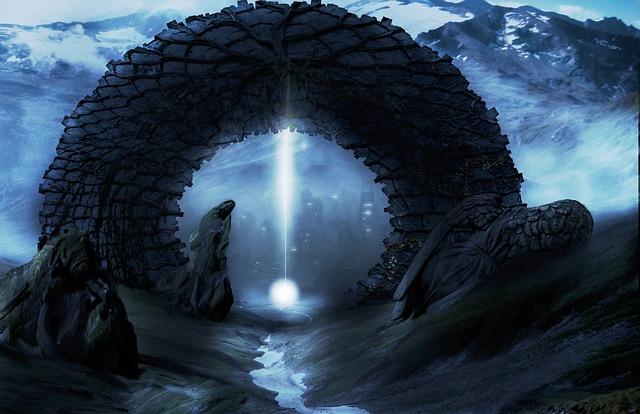In the ever-evolving landscape of cinema, science fiction stands as a genre that consistently pushes the boundaries of imagination and technology. While countless sci-fi films have dazzled audiences with futuristic worlds and advanced concepts, a select few have transcended the ordinary, offering unique plots intertwined with groundbreaking visual effects. These films not only challenge our perception of reality but also redefine the possibilities of storytelling and cinematic innovation. In this exploration, we delve into the masterpieces that have set new standards in the genre, analyzing how their inventive narratives and pioneering visual artistry continue to captivate and inspire filmmakers and audiences alike.
Exploring Unconventional Narratives in Sci-Fi Cinema
In the realm of sci-fi cinema, some films stand out not just for their futuristic settings but for their unconventional narratives that challenge traditional storytelling. These films often employ innovative structures and groundbreaking visual effects, pushing the boundaries of both plot and perception. One such example is Arrival, where the narrative unfolds non-linearly, mirroring the alien language at the heart of the story. This approach forces viewers to reconsider their understanding of time and communication, enhanced by its hauntingly beautiful visual effects.
- Inception – A mind-bending journey through layers of dreams, utilizing complex visual cues to distinguish between reality and imagination.
- Blade Runner 2049 – Combines a visually stunning dystopian world with a plot that questions the essence of humanity and consciousness.
- Ex Machina – A minimalist yet gripping narrative that uses visual subtlety to explore artificial intelligence and ethical dilemmas.
These films exemplify how sci-fi can transcend typical genre conventions, offering audiences not just entertainment, but a profound exploration of existential themes. The integration of innovative visuals with complex plots creates an immersive experience that invites viewers to engage with the narrative on a deeper level.
The Evolution of Visual Effects in Modern Sci-Fi Films
The journey of visual effects in modern sci-fi cinema is a testament to technological advancement and artistic innovation. From the practical effects of the past to today’s seamless CGI, filmmakers have continually pushed the boundaries of imagination. James Cameron’s “Avatar” revolutionized 3D technology, immersing audiences in the lush world of Pandora with unparalleled depth and detail. The film’s use of performance capture and virtual cameras set new standards for realism and emotional engagement.
Recent entries like “Blade Runner 2049” and “Dune” have further expanded the horizons of what’s visually possible. These films utilize a blend of CGI and practical effects to create stunningly believable worlds. Key elements include:
- Meticulous world-building: Creating expansive universes that feel lived-in and authentic.
- Innovative lighting techniques: Enhancing mood and atmosphere, essential for immersive storytelling.
- Advanced rendering technologies: Achieving photorealistic textures and seamless integration of live-action and digital components.
As technology continues to evolve, the visual storytelling in sci-fi films promises even more groundbreaking experiences, blurring the lines between reality and fantasy.

Pioneering Techniques: How Technology Shapes Sci-Fi Worlds
- Digital Landscapes: Modern sci-fi films employ cutting-edge CGI to create immersive worlds. By harnessing advancements in rendering technologies, filmmakers design intricate environments that captivate audiences. The use of virtual reality in pre-production allows creators to explore these digital realms, ensuring a seamless blend of reality and imagination.
- AI-Driven Storytelling: Artificial intelligence plays a pivotal role in crafting complex narratives. Algorithms analyze vast amounts of data to predict viewer preferences, enabling writers to develop plots that resonate on a deeper level. This synergy between technology and creativity results in stories that are both innovative and emotionally engaging.
With the rise of machine learning, visual effects have reached unprecedented levels of realism. Techniques like deepfake and neural rendering allow for the creation of hyper-realistic characters and environments. These advancements not only enhance the visual spectacle but also open new avenues for storytelling, pushing the boundaries of what is possible in cinematic art.

Top Sci-Fi Films Redefining Genre Boundaries
In recent years, science fiction has transcended traditional storytelling, venturing into realms where visual splendor meets innovative narratives. These films have not only captivated audiences but also expanded the very definition of the genre. At the forefront of this evolution is a selection of cinematic masterpieces that blend unprecedented special effects with thought-provoking plots, challenging our perception of reality and the future.
- Visual Innovation: Films like “Blade Runner 2049” and “Arrival” utilize cutting-edge CGI to craft immersive worlds that feel both familiar and alien. The meticulous attention to detail in these environments serves as a backdrop for exploring complex themes of identity and existence.
- Unique Narratives: Titles such as “Annihilation” and “Ex Machina” push narrative boundaries, weaving stories that delve into the human psyche and our relationship with technology. These films invite viewers to ponder ethical dilemmas and the potential consequences of scientific advancement.
Through a combination of stunning visuals and compelling storytelling, these films not only redefine what science fiction can achieve but also inspire future filmmakers to explore new possibilities within the genre.

